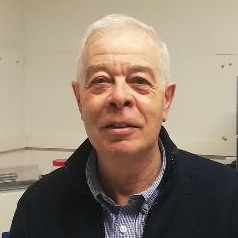Flavonoids: From Structure to Health Issues II
A special issue of Molecules (ISSN 1420-3049). This special issue belongs to the section "Natural Products Chemistry".
Deadline for manuscript submissions: closed (15 November 2019) | Viewed by 57069
Special Issue Editors
Interests: food; phenolic compounds; anthocyanins; flavonoids; metabolites; biological activity; health implication
Special Issues, Collections and Topics in MDPI journals
Interests: polyphenols; flavonoids; products of the hive (honey and bee-pollen); health implications; biological activity; C. elegans
Special Issue Information
Dear colleagues,
Owing to the great success of the Molecules Special Issue on "Flavonoids: from Structure to Health Issues" (https://www.mdpi.com/journal/molecules/special_issues/flavonoids) with 31 published articles over 2017 accumulating more than 300 citations, a second edition is now being prepared.
As for the previous edition, a wide scope of hot topics in current flavonoid research is intended to be covered, from the physico-chemical to biological properties. The main but not exclusive subjects that will be addressed are advanced extraction and analysis, structural characterization, synthesis, influence on the technological and sensory properties of food, interest as nutraceuticals and functional food ingredients, dietary intake or health implications. Particular focus will be placed on novel methodological approaches in the study of the bioavailability, metabolism and molecular mechanisms involved in the biological effects of flavonoids, such as omics techniques, assays in model organisms, and interactions with the intestinal microbiota.
We invite you to participate in this new Special Issue by submitting a contribution from your field of expertise regarding flavonoids, in the form of either an original research article, a short communication or a specialized critical review, although in this latter case the subject must be previously agreed, to prevent possible overlapping topics.
We thank you in advance for your interest and cooperation and look forward to hearing from you.
Kindest regards,
Prof. Celestino Santos-Buelga
Prof. Ana M. González-Paramás
Guest Editors
Manuscript Submission Information
Manuscripts should be submitted online at www.mdpi.com by registering and logging in to this website. Once you are registered, click here to go to the submission form. Manuscripts can be submitted until the deadline. All submissions that pass pre-check are peer-reviewed. Accepted papers will be published continuously in the journal (as soon as accepted) and will be listed together on the special issue website. Research articles, review articles as well as short communications are invited. For planned papers, a title and short abstract (about 100 words) can be sent to the Editorial Office for announcement on this website.
Submitted manuscripts should not have been published previously, nor be under consideration for publication elsewhere (except conference proceedings papers). All manuscripts are thoroughly refereed through a single-blind peer-review process. A guide for authors and other relevant information for submission of manuscripts is available on the Instructions for Authors page. Molecules is an international peer-reviewed open access semimonthly journal published by MDPI.
Please visit the Instructions for Authors page before submitting a manuscript. The Article Processing Charge (APC) for publication in this open access journal is 2700 CHF (Swiss Francs). Submitted papers should be well formatted and use good English. Authors may use MDPI's English editing service prior to publication or during author revisions.
Keywords
- Advanced extraction and analysis
- Structural characterization
- Synthesis of flavonoids and metabolites
- Sensory properties
- Nutraceuticals and functional foods
- Dietary intake
- Health implications
- Bioavailability and metabolism
- Molecular mechanisms of activity
- Omics approaches
- Model organisms
- Interactions with the intestinal microbiota.
Related Special Issue
- Flavonoids: From Structure to Health Issues in Molecules (41 articles)







